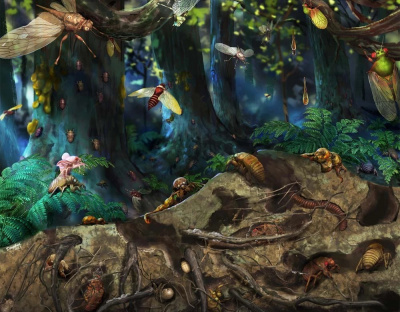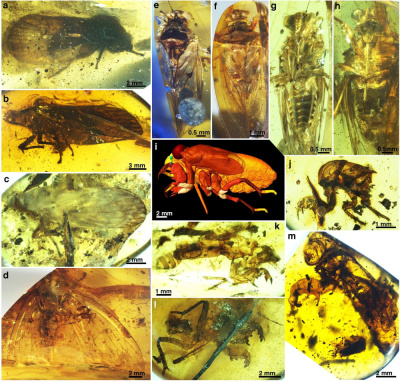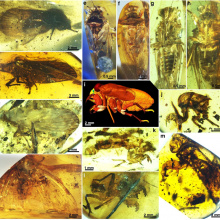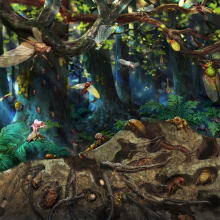
Based on research in Myanmar in southern Asia, a team including dr hab. Jacek Szwedo, prof. UG from the Faculty of Biology prepared a publication on the evolutionary history of cicadas. The article appeared in ‘Nature Communications’, a journal with an impact factor of 17,694, which is among the journals highest-ranked by the MEiN.
The publication was prepared by an international team of 13 researchers from China, Poland, Germany, the USA, and Australia. The scientists' discoveries are based, among other things, on the inclusion of cicadas in amber. Their work was highlighted on the Nature Communications Editors' Highlights page.
Common Cicadidae and relict Tettigarctidae

Cicadas (Hemiptera: Cicadoidea) comprise two families: the widespread Cicadidae and the relict Tettigarctidae of Australia and Tasmania. Fossils are assigned to these two groups based on several distinct morphological characters defining their modern relatives. However, when directly assigning Mesozoic extinct forms to modern taxa, unique and transitional features preserved in the fossils can be overlooked. Such an approach makes it difficult to trace early evolutionary pathways.
‘Based on fossils of adult forms, larvae and moults in Middle Cretaceous amber from Kachin, Myanmar, we investigated the phylogenetic relationships and morphological differences of fossil and modern cicadas,’ the paper's authors write in the abstract. ‘Our results suggest that the Cicadidae and Tettigarctidae may have split at least in the Middle Jurassic or earlier. The morphological evolution may have been forced by changes in available host plants. Cicadas from the Middle Cretaceous were either mute, like the modern Tettigarctidae, or may have made faint sounds associated with the presence of a sound system, the tympanic organ.’
The discovery of fossils of the last larval stages and moults of cicadas with preserved burrowing forelegs and stinging-sucking mouth apparatus indicates that they probably presented a subterranean lifestyle, at least in the middle Cretaceous. They occupied a subterranean ecological niche, feeding on roots. The international team's research analysed the evolution of Cicadoidea from the Mesozoic period, focusing on their morphology, behaviour and ecology. They highlighted the adaptive features and interactions of cicadas with the environment.
The entire article can be found on the Nature website.



